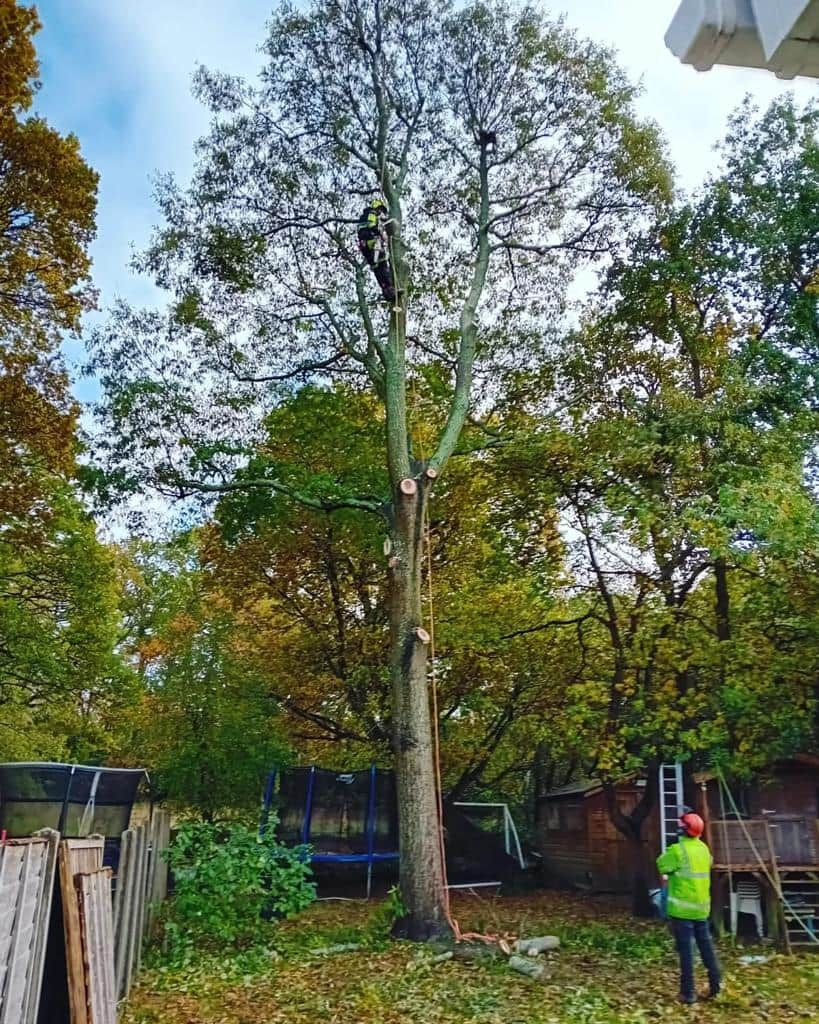When it comes to maintaining healthy fruit trees, one of the most effective methods to ensure robust growth and bountiful harvests is crown reduction. A technique commonly used in tree surgery, crown reduction involves carefully reducing the size of the tree’s canopy to improve its overall health, allow better airflow, and—most importantly—enhance the quality and quantity of fruit production. In this blog post, we will explore how crown reduction benefits fruit trees in Dorking, Surrey, and how this process can help maximize sunlight exposure and yield.
1. What Is Crown Reduction and How Does It Benefit Fruit Trees?
Crown reduction is the process of trimming and thinning the canopy of a tree, making it smaller and more compact while maintaining its structural integrity. This is different from crown thinning, which focuses on removing smaller branches to improve airflow and light penetration.
For fruit trees, crown reduction offers several key benefits:
- Improved Light Penetration: One of the primary reasons for performing crown reduction on fruit trees is to allow more sunlight to reach the interior of the tree. This is crucial for photosynthesis, the process by which trees convert sunlight into energy. A tree with a dense canopy can block light from reaching the lower branches and fruits, resulting in poor fruit development.
- Enhanced Fruit Quality: By reducing the size of the canopy, crown reduction helps fruits receive more direct sunlight, improving their size, colour, and sweetness. This is particularly important for trees such as apple, cherry, and plum, which rely on adequate sunlight for optimal fruit maturation.
- Better Airflow and Health: A reduced crown allows for better airflow through the tree, which can help prevent fungal diseases and pests. Stagnant air and excessive humidity in dense canopies create a favourable environment for these issues, which can harm both the tree and its fruit.
2. How Crown Reduction Maximises Sunlight for Fruit Trees
Maximising sunlight exposure is key to improving fruit tree health and yield. Without adequate sunlight, fruit trees struggle to produce the energy needed for growth and fruit production. A dense crown can cast a shadow over lower branches, leading to weak, undersized fruits or, in some cases, the death of branches that do not receive enough light.
Crown reduction strategically removes the uppermost and outermost branches, allowing sunlight to penetrate deeper into the tree. This enables the tree to receive uniform light across the canopy, ensuring that all branches and fruit-bearing sections are optimally exposed. The result is stronger growth, more consistent fruit production, and a higher yield overall.
3. How Crown Reduction Promotes Yield and Fruit Production
While crown reduction is often seen as a method for maintaining tree shape, it also plays a crucial role in improving fruit production. By improving sunlight access and airflow, the tree is better able to focus its energy on growing healthy fruit, rather than sustaining unnecessary growth in shaded areas.
Additionally, crown reduction can encourage the growth of new, more productive branches. In many fruit trees, older branches tend to produce fewer and smaller fruits, whereas younger, sun-exposed branches yield larger, juicier fruit. By selectively reducing the crown, more productive growth is stimulated, which directly increases the tree’s yield.
4. When Should You Perform Crown Reduction on Fruit Trees?
The best time to perform crown reduction on fruit trees is typically during their dormant period, which is in late autumn or early winter. This timing allows the tree to heal from any cuts before the growing season begins. However, it’s important to note that excessive pruning or crown reduction should be avoided, as removing too much of the canopy at once can stress the tree and reduce fruit production.
Working with a qualified tree surgeon ensures that the right amount of the canopy is reduced to achieve the desired results. Professionals can assess the tree’s health and structure to determine the most appropriate amount of pruning for maximum benefit.
Conclusion
Crown reduction is a valuable technique for fruit tree maintenance, helping to maximise sunlight exposure, improve fruit quality, and increase yield. By carefully reducing the tree’s canopy, more light can penetrate the tree, encouraging healthier, stronger growth and more fruitful harvests. Additionally, better airflow helps to prevent disease and pest issues that can harm the tree.
If you’re looking to enhance the health and productivity of your fruit trees in Dorking, Surrey, NS Tree Surgery Dorking is here to help. Our professional tree surgeons have the expertise to carry out crown reduction safely and effectively, ensuring your trees thrive and provide you with a bountiful harvest year after year. Contact us today to learn more about our tree surgery services and how we can help optimise your fruit tree care.
Call us on: 01306 776 298
Click here to find out more about NS Tree Surgery Dorking
Click here to complete our contact form and see how we can help with your tree needs.

